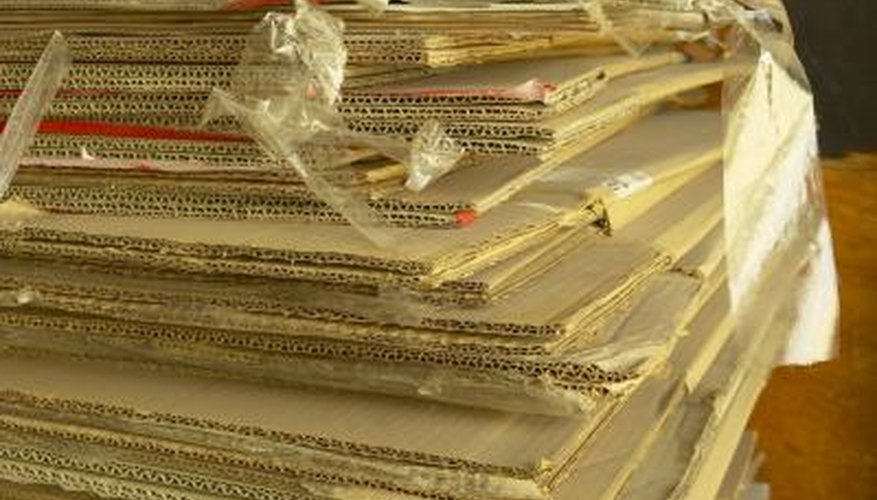Corrugated board is a common but often overlooked material with several uses. Also called cardboard, the material is found in individual and commercial settings. However, this very versatile board is not without its faults. For example, water destroys corrugated board. As with any other multiuse material, corrugated board has its advantages and disadvantages.
Flexibility
Corrugated board can be cut, folded, glued, stapled and taped to assume a number of different shapes and sizes. One sheet can be shaped to hold large or small items. The flexibility does come at a price, however. The points where the cuts are made into the corrugated board are weak spots prone to breakage under heavy pressure. The flexible material can only make polygon shapes with few curves. It does not conform easily to the size of many products, requiring the need for packing materials prior to shipping.
- Corrugated board can be cut, folded, glued, stapled and taped to assume a number of different shapes and sizes.
Composition
According to I. Waterman Box Makers Ltd., corrugated board is composed of paper made from cellulose. Glue is used to connect a ridged piece of corrugated board between two straight pieces. The composition creates the strength the corrugated board containers are known for. Despite the strength in composition, corrugated board is still made from paper, which is easily destroyed by liquids. Any liquid shipped in corrugated board without support and proper sealing can create a mess during shipping.
- According to I. Waterman Box Makers Ltd., corrugated board is composed of paper made from cellulose.
- Despite the strength in composition, corrugated board is still made from paper, which is easily destroyed by liquids.
Uses
The board is used primarily in shipment of goods. However, corrugated board is used in everything from display boards to bracing for picture frames. Corrugated board can be found in cheap furniture as well. Although it is used in a number of ways, the corrugated board is limited in the amount of weight that the containers made from the material can handle. This is especially true for containers that come specially made, using multiple pieces and lots of glue and/or tape. The material cannot transport liquids and hazardous chemicals without stringent approval.
- The board is used primarily in shipment of goods.
- Although it is used in a number of ways, the corrugated board is limited in the amount of weight that the containers made from the material can handle.
Recycling Corrugated Board
Corrugated board is biodegradable and often contains recycled paper. It can also be recycled. However, problems arise when trying to store corrugated board for recycling. Many companies incur additional costs and individuals end up using space within the home or forgoing recycling altogether. Recycling the board can be seen as less than convenient. Corrugated board is no longer recyclable when it has been laminated, and some recycling centres require metal parts, such as staples, to be removed before they will accept corrugated board.
- Corrugated board is biodegradable and often contains recycled paper.
- However, problems arise when trying to store corrugated board for recycling.
